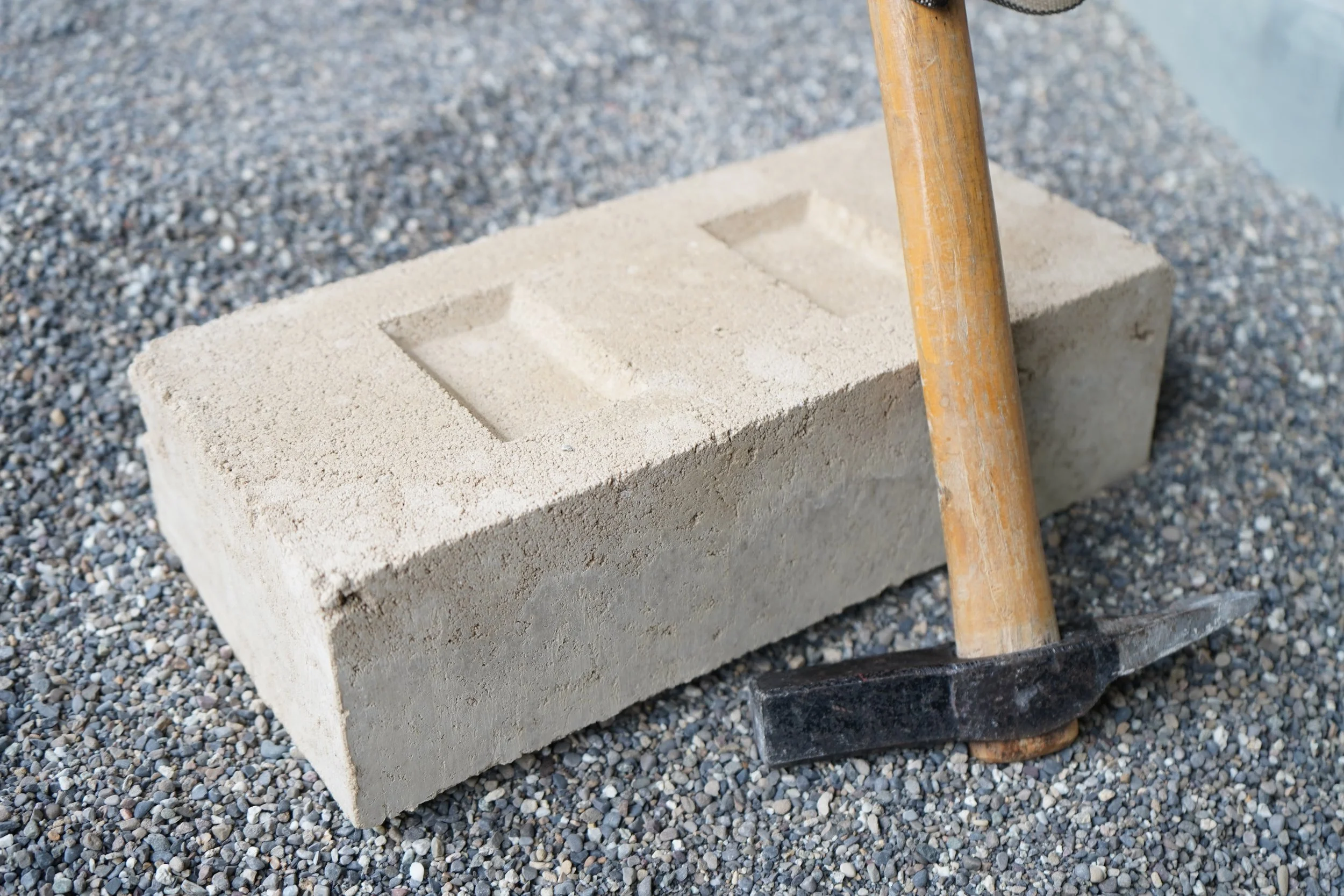Sustainable clay bricks
MgO-based binders have demonstrated promising compatibility with natural earth materials, which are frequently excavated and discarded on construction sites. When their composition is suitable, these materials can be upcycled on-site to create new building components, such as compressed earth blocks (CEBs). This approach presents a sustainable alternative to conventional fired bricks.
In Switzerland, the annual consumption of fired bricks was approximately 0.7 million m³ in 2017, mainly driven by residential construction. The energy-intensive sintering process required for fired bricks contributes roughly 0.9% of the country's total CO₂ emissions. To reduce this impact, CEBs are being developed from non-fired earth and stabilized with binders to improve their mechanical strength and durability. However, the use of conventional cement in CEBs -- despite improving performance -- remains problematic due to its high carbon footprint.
This project focuses on the development of durable, low-carbon earth-based building materials capable of replacing fired bricks in construction. MgO-stabilized earth blocks show strong potential to significantly lower CO₂ emissions associated with housing construction. Excavated materials and brick-grade raw earth serve as the base for these systems.
In collaboration with Omya, multiple magnesium-based binders are tested for CEB stabilization, with results evaluated through CO₂ footprint analysis and mechanical performance metrics. Further testing under near-real conditions is planned to ensure suitability for outdoor applications. The most promising formulation -- optimized for both performance and environmental impact -- will be deployed in the NEST “Beyond Zero” unit, part of Empa and Eawag’s modular innovation platform.
Contact: Charlotte Dewitte, Ellina Bernard, Mateusz Wyrzykowski
Publications:
Links:

